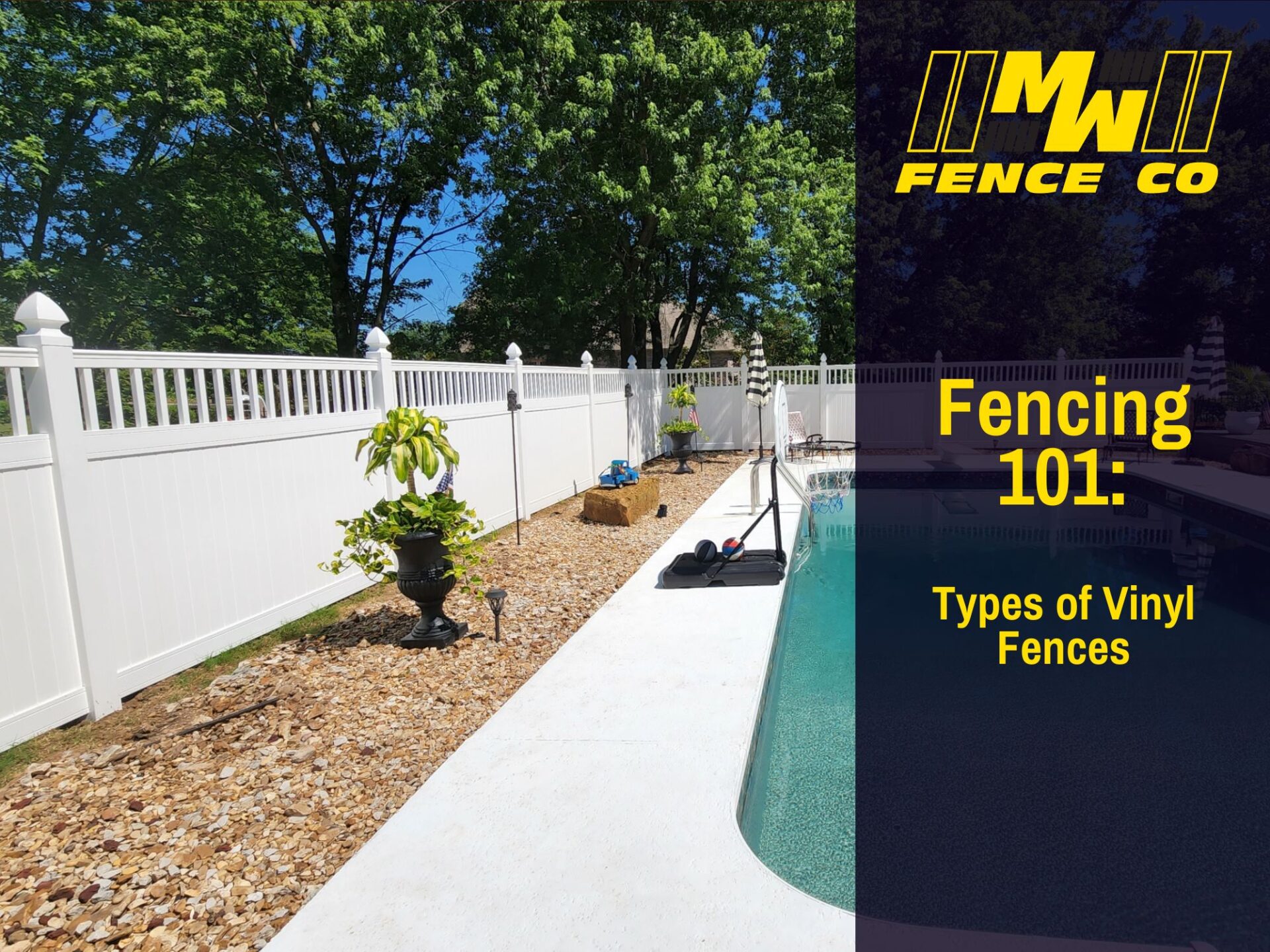If you're considering installing a fence around your yard, one of the options worth exploring is vinyl fencing. Vinyl fences have become increasingly popular due to their durability, low maintenance requirements, and attractive appearance. Furthermore, vinyl fences are known for their longevity, resistance to weathering, and minimal maintenance requirements. One of the key factors that contribute to the performance of a vinyl fence is the materials used and how it’s made. There are many different components available for use in vinyl fences, each with its own set of benefits and drawbacks. In this blog, we will explore the various components of vinyl fences to help you make an informed decision about which one will suit your needs.
1. PVC (Polyvinyl Chloride):
PVC vinyl is the most common type of vinyl used in fences. It is a synthetic plastic polymer composed of chlorine and ethylene. PVC vinyl is known for its durability and low maintenance requirements. It does not require painting, staining, or sealing like wood fences. PVC vinyl fences are also resistant to rot, decay, and insects. Additionally, PVC vinyl is UV resistant, which helps prevent fading and discoloration over time. PVC vinyl fences come in a variety of styles and colors, making it easy to find one that complements your home's aesthetic.
2. Titanium Dioxide:
Titanium dioxide is a chemical compound that is often added to PVC vinyl to enhance its UV resistance. Titanium dioxide helps prevent the breakdown of the vinyl material due to exposure to sunlight. It helps protect the fence from fading, chalking, and discoloration. Any good quality vinyl fence will contain titanium dioxide to protect against exposure to direct sunlight for long periods of time, prolonging the life of the fence.
3. Co-Extrusion:
Co-extrusion is a process in which multiple layers of vinyl are fused together during manufacturing. Typically the outer layer will contain more titanium dioxide, adding strength, rigidity, and UV resistance to the fence. Co-extruded vinyl fences are less likely to sag, warp, or bend over time. The multiple layers also provide added protection against scratching, staining, and fading. Most quality vinyl manufacturers use co-extrusion as it is a cost-effective means for creating a fence that can withstand harsh weather conditions and heavy use.
4. Recycled Vinyl:
Recycled vinyl is a more environmentally friendly option for homeowners supporting manufacturers who are actively trying to reduce their carbon footprint. This type of vinyl is made from recycled plastic materials, such as old PVC pipes and other plastic products. Recycled vinyl fences are usually just as durable and low maintenance as virgin vinyl fences. Recycled vinyl fences from quality manufacturers typically have a virgin vinyl outer layer that contains virgin vinyl resin and titanium dioxide. The inner layers may be a slightly different color as some of the recycled material might be from a different color material. Quality manufacturers typically only use their own internally produced “regrind” as the recycled component, while others will use plastic or vinyl waste from other manufacturers, and even add chalk as a filler to create substance and save money during the manufacturing process. Recycled vinyl fences come in all the colors and styles of a virgin vinyl fence.
5. Virgin Vinyl:
Virgin vinyl fencing is made from 100% new PVC resin. It is known for its purity and consistency. Virgin vinyl fences are less likely to contain impurities or defects that can weaken the material and are also more resistant to fading, chalking, and discoloration compared to recycled vinyl fences. Most manufacturers today have a co-extrusion process that uses recycled material for the inner layers, with a virgin outer layer. Vinyl fences may be more expensive than recycled vinyl, but the added durability and performance benefits may be worth the investment for some homeowners.
6. Vinyl Overlays:
One of the newer vinyl fence offerings involves fusing a colored or patterned overlay onto the vinyl product itself. The result is an amazingly realistic wood grain look or any color of the rainbow. This new technology is still developing, but if you’re looking for something different that can really stand out, ask about these options.
Overall, when choosing a vinyl fence, be sure to consider your goal with respect to your budget. Ask questions, do your homework… many manufacturers are seeking your business, and reputable companies will have plenty of information to support their products.
One aspect that often gets overlooked is the future availability of repair parts. Big box stores typically rotate out products every year or two, leaving consumers with no options for replacing parts when accidents happen. Ask your vendor and/or your contractor what brand of vinyl they use, and ask for brochures about their products…not all are created equal!
Vinyl fences can be a great long-term investment for any homeowner, as long as you get a great product. Reach out to MW Fence today to learn more about vinyl fences, or use our online estimator tool for a free estimate!



